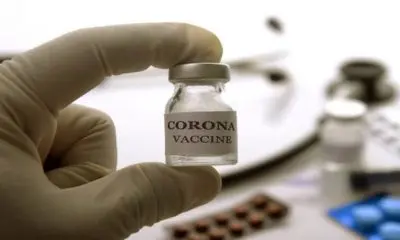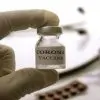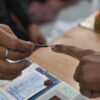National
CDDEP Report Suggests Start Of Community Transmission In India
By Akshara Bharat
As many as 100 million people are likely to get infected by the novel coronavirus, according to a report published by Johns Hopkins University and Center for Diseases Dynamics, Economic and Policy (CDDEP). In absence of any timely interventions, the number of infected people can rise up to 400 million by the month of July, 2020.
The report also mentions that community transmission or (Stage-3) of COVID-19 in India had most likely started in early March, which is in direct contradiction to Indian Government’s stance that the country has not yet entered ‘Stage-3’ of the COVID-19 transmission. Reiterating the same, Health Ministry’s Joint Secretary Lav Agarwal said on March 26 that there was no proof of community transmission of coronavirus in India as yet.
CORONA CRISIS; WHAT THE POORS WILL DO DURING THE LOCKDOWN?
The report also states that the most critical period will be between April and May 2020, during which over 100 million could be infected of which 10 million will be severe and 2-4 million will require hospitalisation.
The report depicts the aforementioned figures in three possible scenarios: Low, medium and high baseline scenarios.
Low : The sanguine low scenario assumes decreased virulence and the virus being less sensitive to temperature and humidity.
Medium: This one is the most probable one, where people show moderate to full complaisance with lock downs, but the disease virulence remains unaffected.
High: A scenario based on the present state of lockdowns and insufficient social distancing or compliance.
As of March 26, 2020, the total number of positive cases in India had crossed 700. In the high and medium scenarios, the total number of infections starts to slump only around April and May, with the number of cases surging past 100 million in April itself. Whereas, a low scenario sees this take place somewhere between May and June.
The CDEP generated these numbers using a modelling system called IndiaSIM, an agent-based model (AGM) that replicates India’s population demographics, healthcare system and socio-economic characteristics, among other factors, to arrive at the key conclusions relevant to the spread of coronavirus in India.
Distressingly, the report has its doubts regarding the potency of India’s social distancing measures, and even the 21 days lockdown.
It says, “A national lockdown is not productive and could cause serious economic damage, increase hunger and reduce the population resilience for handling the infection peak. Some states may see transmission increase only after another 2 weeks and lockdowns should be optimized for when they could maximize the effect on the epidemic but minimize economic damage.”
Fire accident at kaying village siang district around 50 house gutted down in 45 minutes
Also, it adds, “Border closures at this stage have little to no impact and add further economic disruption and panic. While international transmission was important in the first stage, domestic transmission is now far more relevant.”
It further states that generalized social distancing can, in theory, reduce this peak load by as much as 75% although this may be hard to enforce in India.
It also highlights the sorry state of the country’s healthcare sector by saying the current ICU and ventilator-equipped bed capacity in India is at just 30,000-50,000 for ventilators and 70,000-100,000 for beds. As per CDDEP, another factor that could further swell deaths in the general population is the mortality in healthcare workers.
Clearly, there is a dire need to amp up the supply of personal protective equipment (i.e., masks and gowns) for healthcare workers, as they are super vulnerable to the infection. Amidst the scarcity of health care facilities in the country, loss of health workers will make the situation grim by straining the capacity of the system to respond to the ongoing crisis.
























